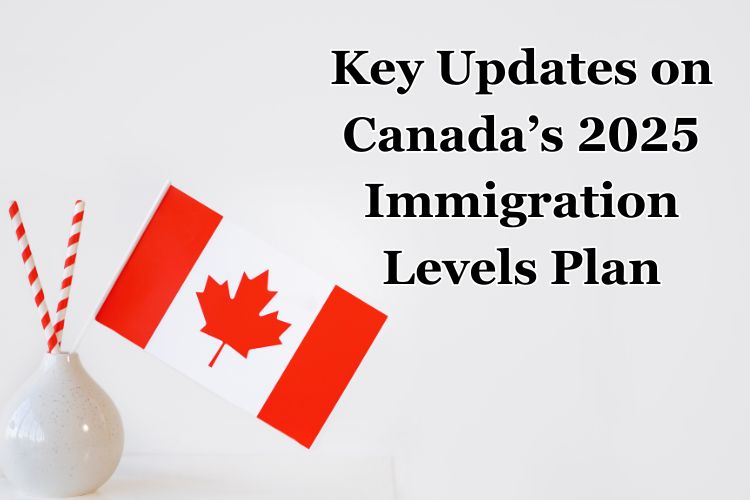


Discover Canada’s 2025 Immigration Plan focusing on Express Entry, economic immigration, and Francophone communities to address labour market needs.
Canada’s immigration policy is experiencing a revolutionary transition with the launch of the 2025 Immigration Levels Plan. This strategy, published by the Minister of Immigration, Refugees and Citizenship, intends to meet both the economic demands of the nation and the issues brought by fast population expansion. As Canada continues to be a favorite destination for immigrants, knowing the ramifications of this new strategy is vital for prospective immigrants, particularly those looking to navigate the complexity of immigration procedures with the aid of immigration consultants in Canada.
The 2025 Immigration Levels Plan sets ambitious but reasonable aims for permanent resident admissions over the next five years:
This reflects a considerable fall from earlier expectations, which targeted 500,000 new permanent residents yearly. This drop is because it is diverse and focused on controlling population pressures while ensuring that immigrants may be fully assimilated into Canadian culture.
For the first time, the immigration strategy incorporates explicit objectives for temporary residents. The government plans to reduce the number of temporary residents to 5% of Canada’s population by the end of 2026, down from 7%. This development indicates a rising understanding of balancing short-term immigration with long-term integration.
Despite the overall drop in immigration objectives, there is a clear focus on economic immigration within the strategy. By 2027, it is estimated that economic immigrants will make up around 61.7% of overall admissions. This emphasis intends to recruit qualified individuals who can contribute to Canada’s economy and address labor shortages in vital industries such as healthcare, technology, and skilled crafts.
The strategy also stresses a commitment to assist Francophone communities beyond Quebec. The government has established particular aims for Francophone immigration:
This effort encourages linguistic variety and guarantees that French-speaking communities flourish throughout Canada.
One of the most crucial features of the 2025 Immigration Levels Plan is its influence on in-demand jobs. The government understands that some industries face significant labor shortages and wants to prioritize these areas via tailored immigration policies.
A fundamental component of this strategy is the desire to promote avenues for temporary residents—such as international students and foreign workers—to move into permanent status. This strategy helps alleviate acute labor shortages and enables those who have already assimilated into Canadian society to ensure their futures in Canada.
The Express Entry system will likely undergo upgrades as part of this new approach. As a main channel for economic immigrants, Express Entry will be changed to align with labor market demands. This may include targeted draws concentrating on certain professions in high demand, enabling qualified people in these industries to obtain invitations to apply for permanent residence more rapidly.
As Canada navigates this dynamic immigration environment, the role of immigration advisors becomes more crucial. These specialists offer crucial services that help potential immigrants understand and adapt to changes in immigration regulations and processes.
Every immigrant’s path is unique. Immigration advisors work directly with clients to establish unique plans suited to their circumstances. Whether it means deciding between several immigration options or preparing for an Express Entry application, advisers play a significant role in assisting people toward successful results.
Canada’s 2025 Immigration Levels Plan substantially changes how the government conducts immigration. By decreasing total objectives while prioritizing economic immigration and supporting Francophone areas, Canada hopes to build a sustainable system that benefits immigrants and current inhabitants. As these reforms take effect, the experience of immigration experts will be important for those looking to navigate this complicated terrain efficiently. With their guidance, prospective immigrants may identify avenues that correspond with their talents and objectives, contributing constructively to Canada’s varied community and vibrant economy.
